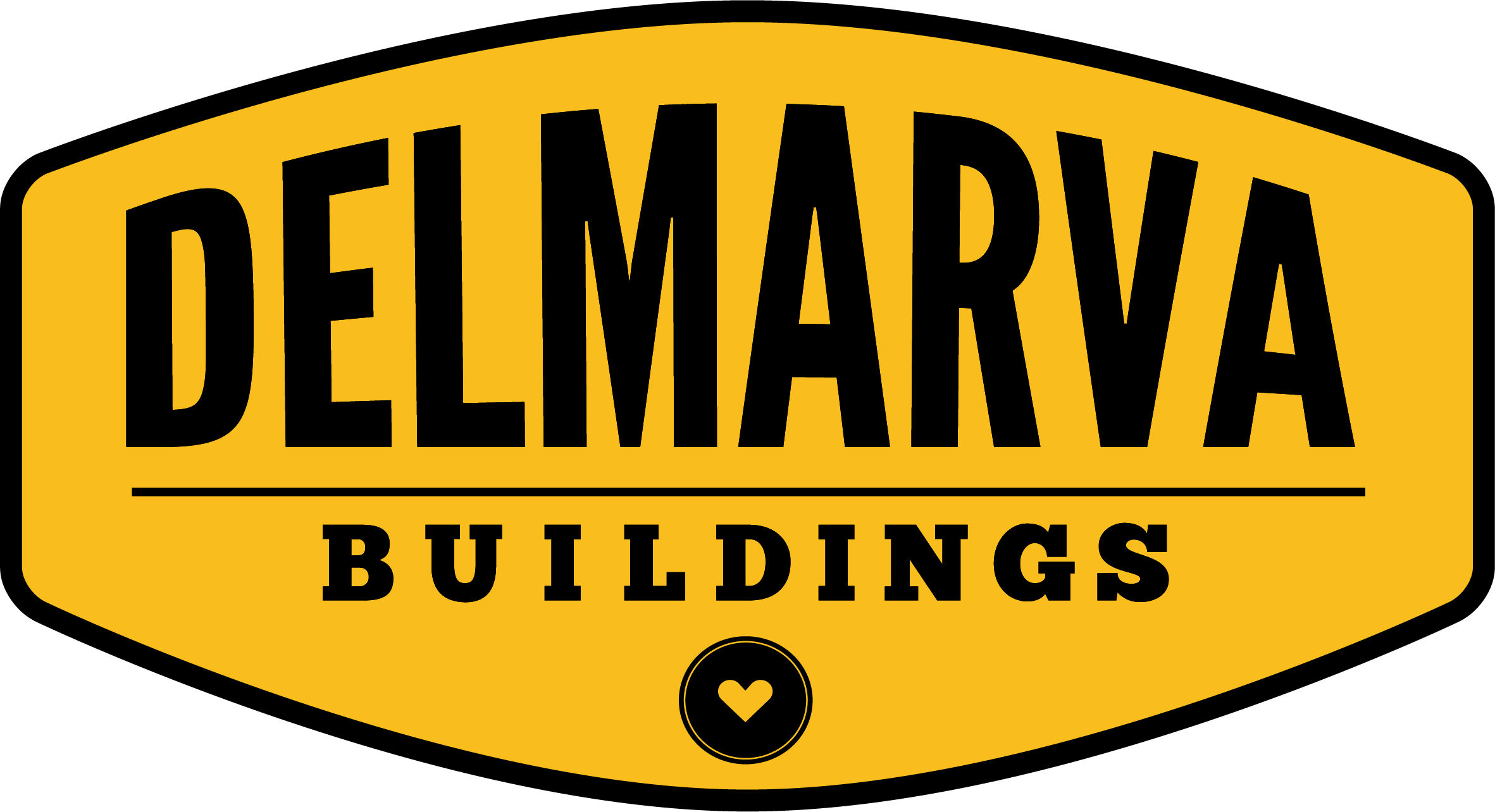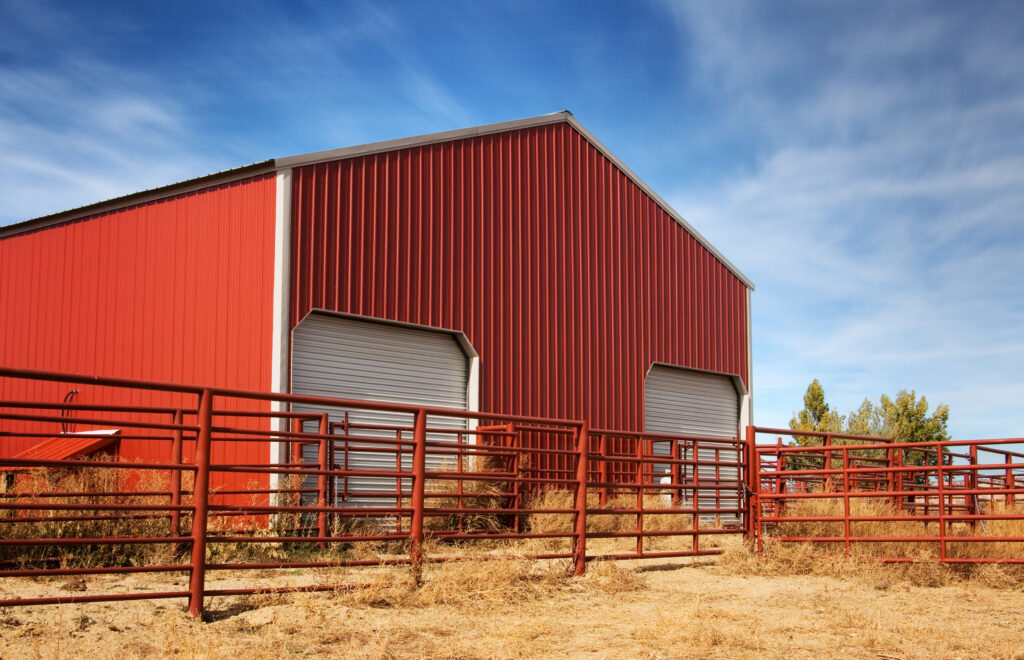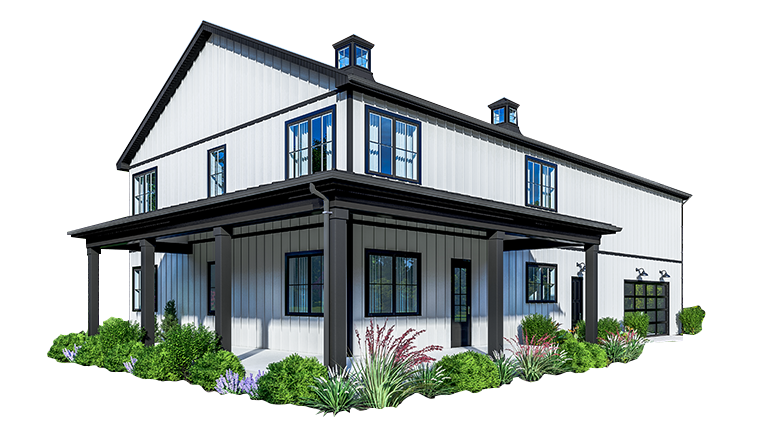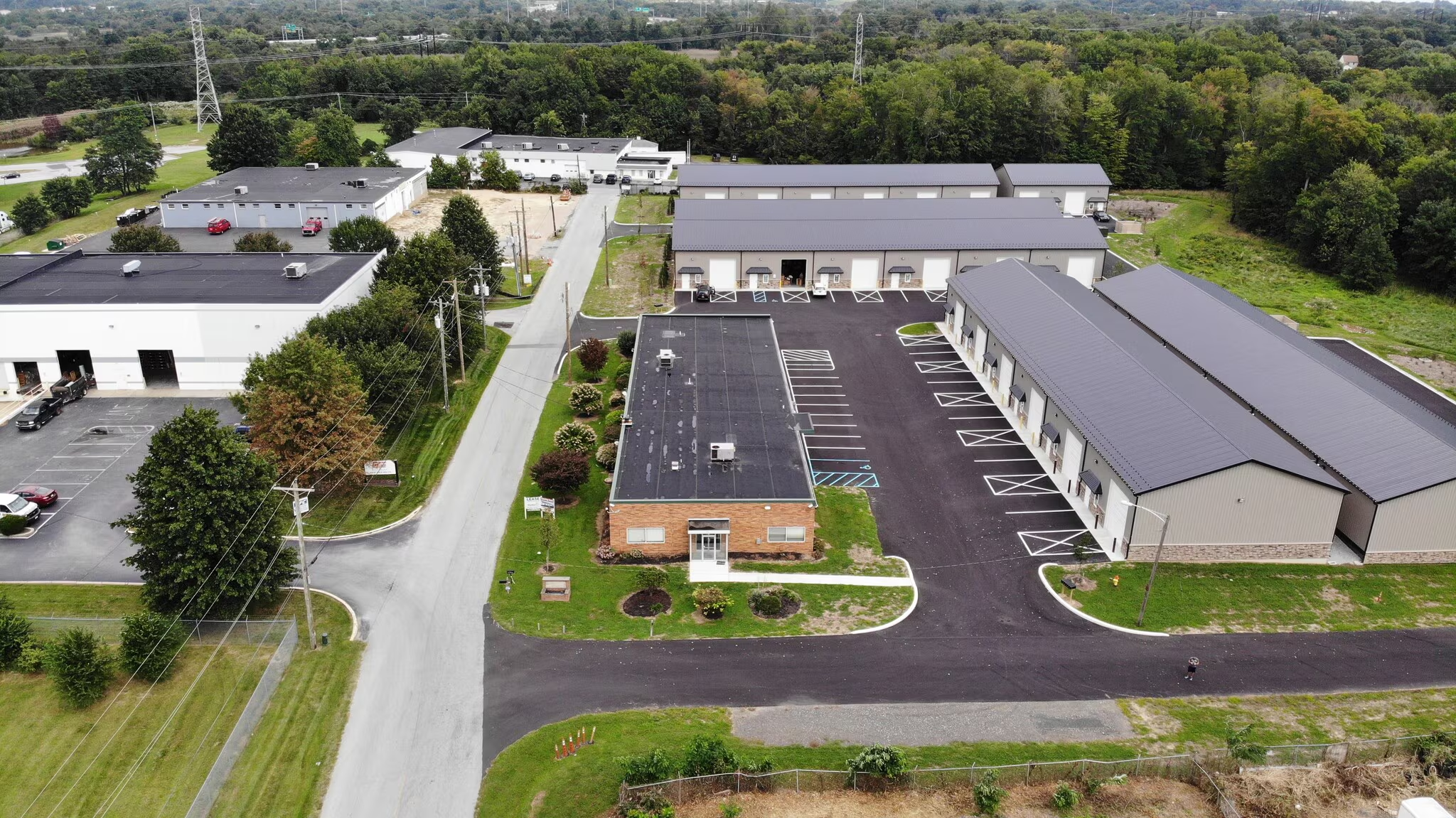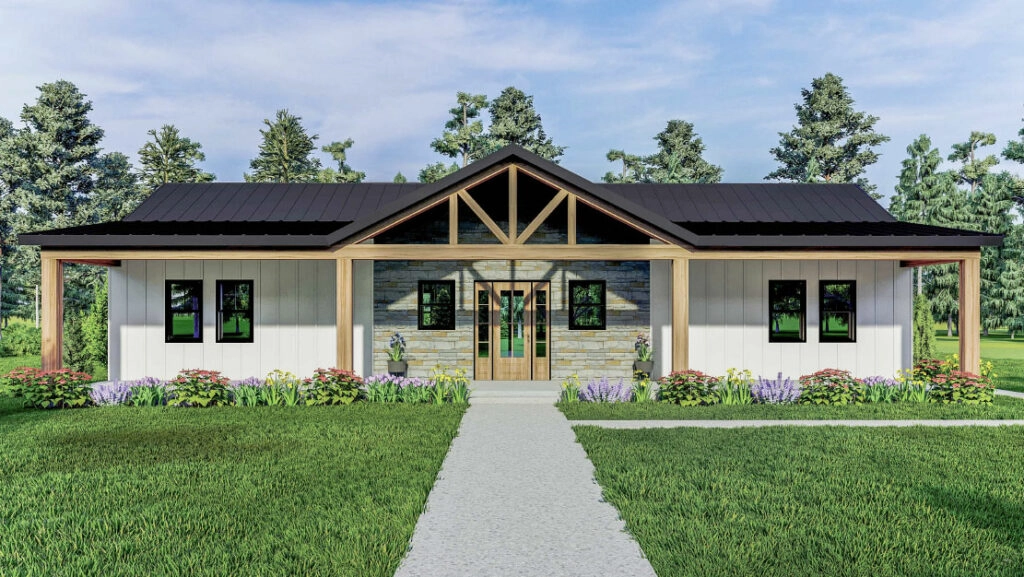Building an equestrian barn is more than just creating a shelter for your horses – it’s about crafting a functional, safe, and beautiful space. Whether you’re a seasoned rider or just starting your journey with horses, understanding how to design the ideal horse barn can make all the difference in your equine experience.
Essential Elements For Your Horse Barn
Creating the Perfect Stall Layout
When planning your equestrian barn, stall configuration is crucial. Most horse owners find that 12×12-foot stalls work perfectly for average-sized horses, though larger breeds might need a bit more room to move comfortably. The key is creating clear, wide aisles that allow both horses and handlers to move safely throughout the barn.
Beyond the stalls themselves, your horse barn should include dedicated spaces for all your daily needs. A well-designed tack room keeps your equipment organized and protected from moisture, while a separate feed room ensures proper storage of grain and supplements. Don’t forget about a grooming area – having a designated space for washing and grooming makes daily care so much easier.
Ventilation and Lighting Make All the Difference
Nothing impacts horse health quite like proper ventilation. Fresh air circulation prevents respiratory issues and keeps your equestrian barn comfortable year-round. Ridge vents and cupolas work wonderfully in Delmarva’s climate, providing natural airflow without creating drafts that might spook your horses.
Lighting is equally important in your horse pole barn. Natural light through windows and LED lights creates a bright, welcoming environment. When it comes to LED illumination, installing poles isn’t required since they can be attached to the ceiling or walls. Some of your best options include:
- High Bay Lights: Perfect for high ceilings and huge barns.
- Flood Lights: Best for lighting paddocks or pathways.
- Tube Lights: Concentrated lightning. Best suited for tack rooms and stalls.
Building for Safety and Durability
Your equestrian barn needs to withstand Delmarva’s weather while keeping your horses safe.
High-quality materials and proper construction techniques ensure your investment lasts for decades. Moisture-resistant footings are particularly important in our coastal climate, preventing issues that could compromise your barn’s stability.
Safety features like secure stall doors, rounded corners, and proper electrical installations protect both horses and handlers. Remember, horses are naturally curious and strong – your barn design should account for their behavior and size.
Also Read: Pole Barn Storefronts in Delmarva: Unique and Customizable Spaces for Businesses
Designing Your Horse Riding Arena
Getting the Dimensions Right
A well-designed horse riding arena transforms your equestrian experience. Standard widths range from 60 to 80 feet for wood-framed structures, though steel buildings can span even wider if your budget allows. The length typically runs about twice the width – a 70×140-foot arena provides excellent space for most riding disciplines.
Height is another crucial consideration for your horse riding arena. While 14 feet is the minimum, 16 feet is much more popular and practical. This extra height accommodates jumping, provides better air circulation, and allows for proper lighting installation without feeling cramped.
Footing and Drainage
The surface of your horse riding arena needs to match your riding discipline. Dressage riders need footing that provides grip and stability, while jumping requires more cushioning to protect horses during landing. Western disciplines often prefer slightly looser footing for sliding stops and turns.
Proper drainage underneath your arena footing is essential. Without it, you’ll face uneven surfaces, poor footing conditions, and potential safety hazards. A well-engineered base with proper gravel layers and drainage systems ensures your arena remains usable year-round.
Arena Features That Enhance Your Experience
Modern horse riding arenas can include amazing features that make training and riding more enjoyable. Viewing areas let friends and family watch lessons or shows comfortably. Climate control systems extend your riding season, while good lighting systems allow for evening training sessions.
Consider adding storage areas within or adjacent to your arena for jump standards, cones, and other training equipment. Some riders also appreciate sound systems for playing music during training or teaching lessons.
Also Read: How Long Do Pole Barns Last? A DIY Guide to Longevity and Maintenance
Working with Delmarva’s Local Expertise
Understanding Local Regulations
Building an equestrian barn in Delmarva requires navigating various local regulations and zoning requirements. Each county has specific rules about setbacks, lot sizes per horse, and special use permits. Many areas require structures to be at least 100 feet from neighboring homes, while others have strict architectural guidelines.
Local builders who specialize in equestrian facilities understand these requirements and can help streamline the permitting process. They’re familiar with wind load requirements, foundation depth needs, and other technical specifications that ensure your horse barn meets all local codes.
Customization Options and Pricing
The beauty of pole barn construction is the incredible customization potential. Your equestrian barn can reflect your style while meeting all functional requirements. Exterior options range from traditional metal siding to more decorative cedar or vinyl materials. Roof styles can include classic gable designs, distinctive gambrel roofs, or modern monitor roofs for extra light.
Pricing for equestrian pole barns varies widely based on size and features. A smaller 28×38-foot horse pole barn might start around $15,800, while larger facilities with full arenas can require significantly more investment. The key is working with experienced builders who provide transparent pricing and help you prioritize features within your budget.
Planning for Future Growth
Smart equestrian barn design includes planning for future expansion. Your needs will likely change as your involvement with horses grows, so building with expansion in mind saves money and hassle down the road.
Start by clearly defining your current needs and future goals. How many horses do you plan to house? What disciplines do you enjoy? Do you need space for lessons, clinics, or shows? These questions help guide your design decisions and ensure your investment serves you well for years to come.
Conclusion
Your equestrian barn represents more than just a building – it’s the foundation of your relationship with your horses and equestrian activities. With thoughtful planning and quality construction, your Delmarva equestrian facility will provide decades of enjoyment for both you and your horses.
Working with local experts who understand both horses and Delmarva’s unique requirements ensures your project runs smoothly from conception to completion. This is where we come into the picture. We can help you navigate permits, optimize your design for the local climate, and create a facility that truly enhances your equestrian lifestyle. Contact us today for a free quote.
